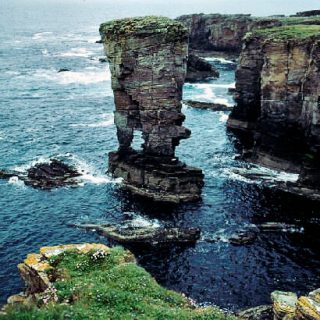Country and County: Orkney
Trows are fascinating creatures found only in the folklore of the Orkney and Shetland islands. But, describing them accurately is difficult because sources are not clear. Folklorists have long insisted that the word “trow” is a corruption of “troll,” and that Orkney’s Trows descend from their Viking ancestors’ stories of Trolls.
Folklore is an integral part of any cultural heritage. Sometimes written off as childish fairytale, folklore deserves to be recognized as a valuable treasure trove of information about our own past. The tales and legends of folklore are the result of oral tradition handed down by mouth through the generations.
Hills, mounds and burial sites. Places which have a timeless allure. Such places can be seen and regarded as mythically liminal, a place that it is not a place. A place outside of time. A place where the living freely walk with the dead. Barrows are just such places.
A Trow is a fairy creature from the folklore of Shetland and Orkney, similar to the mainlands elf, troll or goblin. It is said these musical and mischevious folk could be found living under the earth in mounds as well as in the sea surrounding the Shetland and Orkney.
On 14th July 1990, eighty-eight bird watchers got off a ferry organised by the Orkney Heritage Society and the Royal Society for the Protection of Birds at the uninhabited Eynhallow Island. Only eighty-six returned for the journey back, which sparked a huge search and rescue operation involving the police and coastguard.
This 16th century heavily fortified castle was built by Gilbert Balfour from Fife, brother-in-law of Mary Queen of Scots. Balfour and his brothers had been involved in the murder of Cardinal Beaton in 1546 and had been sentenced to serve time as oar men on a French galley.







Recent Comments